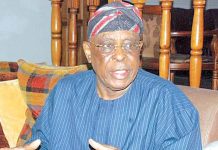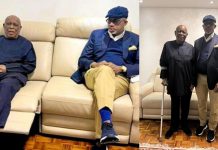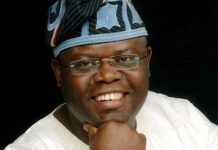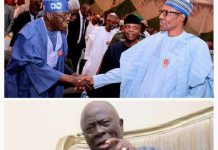Africa Press-Nigeria:
The foregoing is a Yoruba aphorism not easily captured in English, without losing its essence and philosophy. Nevertherless, one may say that in the face of adversity and visisitudes, the Pandoro tree thrives!
Pandoro is an unplanned plant – “o’ la le hu.” This perhaps may capture the life of Awujale Sikiru Kayode Adetona, the potentate of the Ijebu Kingdom, from January 4, 1960 (his date of appointment) till date, and who is better known as Alaayeluwa Sikiru Kayode Adetona, Ogbagba II, the Awujale of Ijebuland.
Sikiru was born on Thursday, May 10, 1934, to Omo Oba Rufai Adetona and Wulemot Ajibabi Adetona (née Onashile) of Ijebu Igbo, a year after the ascension of Daniel Richardson Otubusin Adesanya to the throne of Ijebu Ode.
Daniel Richardson, the 56th Awujale of Ijebuland, whose line starts from Awujale Olu Iwa, was a tailor and draper in Lagos before ascending to the exalted throne of his forefathers as Awujale, and Gbelegbuwa II. He succeeded Awujale Alli Ogunaike, who reigned between 1929 and 1933.
He was on the stool till 1959, and he witnessed the political evolution and transformation that visited the position of traditional rulers as a result of the Macpherson Constitution of 1951. Awujale Adesanya was regarded as a highly cultured Oba, who demonstrated humility and devotion.
Hitherto, Obas were real kaabiyesis, who had political power and authority.
As if undergoing leadership training, Sikiru attended various primary schools, including Baptist School, Ereko, Ijebu Ode; Ogbere United Primary School, Ijebu Ode; and Ansarudeen Primary School, Ijebu Ode, between 1943 and 1950. In 1951, he was admitted into Olu Iwa College (now Adeola Odutola College, Ijebu Ode) and left the school in 1956. In 1957, Sikiru left Ijebu Ode for Ibadan and got into the employment of the Western Region Ministry of Finance, where he worked in the Audit department. It is interesting to note that around this period, Ibadan being a melting point of the Yoruba nation, and even Nigeria, had so many of Sikiru’s age grade there, who were beginning to navigate their lives and future. Around this period, Olusegun Obasanjo also moved to Ibadan, after the completion of his secondary school education at Baptist Boys High School, Abeokuta, and worked as a classroom teacher at the African Church Modern School, Odo-Ona, Ibadan.
Moshood Kashimawo Olawale Abiola, also an ex-student of the Baptist Boys High School, Abeokuta, equally relocated to Ibadan, where he worked at the Barclays Bank, Dugbe and later the finance department of the Western Region government.
Subsequently, Olusegun Obasanjo enlisted in the Nigerian Army in 1959, while Moshood Kashimawo Olawale Abiola secured a Western Region scholarship to study Accountancy at Glasgow University, Scotland, United Kingdom, in 1960. A number of years thereafter, the paths of the two were to cross.
Towards the end of 1958, Sikiru left the services of the Western Region government and moved to Port Harcourt, from where he was to travel to the United Kingdom to study Accountancy. From Port Harcourt, he journeyed by sea on the popular passenger vessel, MV Aureole, to begin a new life as a student. He arrived in the United Kingdom early in January, 1959.
He settled down to the life of a student in the United Kingdom, enjoying all the thrills and frills involved, whilst looking forward to the journey back home as a qualified Chartered Accountant, in no distant future.







